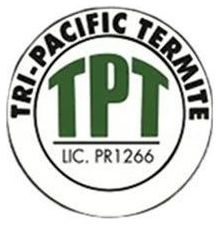FAQs
Tri-Pacific Termite
What does a plumbing leak specifically have to do with termites?
Plumbing leaks create high moisture conditions in wood, which are ideal environments for termites and other wood-destroying organisms. These damp areas often lead to costly fungus damage. Our trained inspectors can identify leaks early, potentially saving you significant repair expenses. For professional termite control services, contact Tri-Pacific Termite today.Are there any other wood-destroying organisms I need to worry about?
While termites are the primary concern, powder-post beetles are the second most destructive wood pests. Like termites, they can cause extensive damage before detection. Carpenter ants and bees are also noteworthy wood-destroying organisms. All these pests thrive in high moisture conditions, which often result from plumbing issues or damaged toilet seals. Early detection of fungal growth can be treated with fungicides, but severe cases may require professional wood replacement.If you have never seen termite swarms in your home, could you still have termites?
It's entirely possible to have a termite infestation without ever witnessing a swarm. Termites primarily work inside wood or underground, making them difficult to detect. Swarms are brief, occurring only once or twice a year, and you may have missed them. Some termite species rarely swarm at all. For a thorough inspection and professional assessment, contact our termite control experts at Tri-Pacific Termite.Why do you need to test the shower and check the toilet seal?
Our inspectors examine these areas to identify conditions that may encourage infestations. Leaky showers or toilets can create moisture in surrounding wood, attracting wood-destroying organisms. We ensure these areas are watertight to prevent potential infestations. Please note, if shower door removal is necessary for repairs, state law requires replacement with safety glass, which may incur additional costs. Contact us for more information about our comprehensive termite control services.What are the differences between Section 1 and Section 2 findings?
Section 1 findings refer to visible, active evidence of infestation by termites, carpenter ants, wood-boring beetles, or fungal infections. Section 2 findings indicate conditions likely to lead to infestation or infection, such as moisture issues or earth-to-wood contact. During property sales, most lenders require Section 1 issues to be addressed before closing. To safeguard your investment and ensure a smooth escrow process, contact Tri-Pacific Termite for a detailed inspection and prompt treatment of all Section 1 and 2 findings.Is termite inspection important?
Termite inspections are crucial for property protection. Every area of your property that contacts soil or contains wood requires thorough examination. Even concrete and masonry should be checked for potential entry points. If you're selling your home, an early inspection can reveal issues to address before listing. Professional inspections are vital as termites can be difficult to detect without training. According to Business Wire, termites cause an estimated $6.8 billion in annual property damage, emphasizing the importance of early detection and treatment. Contact Tri-Pacific Termite for expert inspection services, with a 10% discount if performed before escrow.


